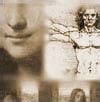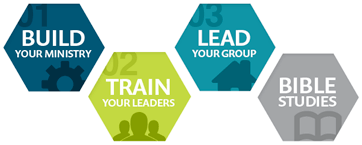The book The Da Vinci Code has caused great confusion, even among Christians. This six-session course looks at the issues that Dan Brown brings up in his famous story, including the authenticity of Scripture, the divinity of Christ, the history of Christianity, the truth about Mary Magdalene, a look at the accusations of classic Christian art, and how we got our Bible. Use this course to help talk through these vital issues to our faith.
Session One
Who Do People Say Jesus Is?
Untangling true and false views of the Son of God.
John 3:16–17; 5:5–18; 8:48–59; 20:24–28; Philippians 2:5–11; Colossians 1:15–20
Dan Brown's false claims about Christianity have caused even atheist magazine The Skeptic to say, "In matters of historical analysis, it is not possible to be more wrong than this." So what identity did Jesus claim for himself? How did his closest friends see him, and what has the church taught about him?
Session Two
Not Just Another Book
If the Bible did not arrive by heavenly fax, where did it come from?
Genesis 1:3–5; Deuteronomy 31:1–3; Nehemiah 6:5–7; Psalm 102:1–2; Proverbs 30:5–6; Matthew 4:1–4; 5:17–20; John 1:1–18
"The Bible did not arrive by fax from heaven," says Leigh Teabing in The Da Vinci Code. Like many passages from the novel, this speech seems to threaten the foundations of Christianity. But unlike most of the book's theological and historical fictions, this statement is mainly true—and it is nothing for Christians to be afraid of.
Session Three
Guardians of the Truth
How do we know the Bible we read is the real thing?
2 Samuel 7:8–17; Matthew 22:15–22; Luke 12:11–12; John 14:15–18, 25–26; Romans 13:1–7; 1 Corinthians 1:1–3; 15:1–11; 2 Corinthians 11:2–6, 12–15
The Bible was written in the midst of controversy and has remained controversial ever since, but this saga in no way undermines its credibility. Rather, the history of the Bible gives us even more reasons to trust the text and the God who safeguards it.
Session Four
History and Heresy
The true story of God's people is stronger than fiction.
1 Kings 14:21–31; 2 Kings 22:1–20; Luke 13:1–9; Romans 16:1–16; 1 Corinthians 10:1–11; Ephesians 6:10–12
There seems to be a widespread belief, even within the church, that the story of God's people is dull, unimportant, or, worse, a tissue of lies. No wonder The Da Vinci Code is such a bestseller—it promises to tell the real history of the church without getting bogged down in pesky facts.
Session Five
Finding the True Mary Magdalene
Was she a sinner, saint, or goddess?
Isaiah 62:1–5; Mark 14:43–54, 66–72; 15:33–47; Luke 8:1–3; John 20:1–18; 1 Corinthians 6:15–17; 12:12–26
No serious scholar argues that Jesus was married, let alone that the church went to murderous lengths to hide it. But while Mary Magdalene cannot seriously be considered a lover or wife, she did have an important relationship with Jesus. Her true relationship with Jesus reveals some of Christianity's forgotten history with women.
Session Six
Eye-Opening Art
What were Christian artists really trying to say in their work?
Exodus 26:1, 14–15, 31–37; 28:1–5; 32:1–7; Isaiah 53:2; Matthew 26:6–13; Acts 17:16–34; Revelation 21:1–2, 9b–22
For author Dan Brown, art and genius are used to conceal truths about God and the world. But in fact, Christianity has used art to proclaim openly the good news of Jesus' coming and to reveal his truth. This study discusses how art, beauty, and Christianity belong in the same sentence.
Total number of pages - 64





